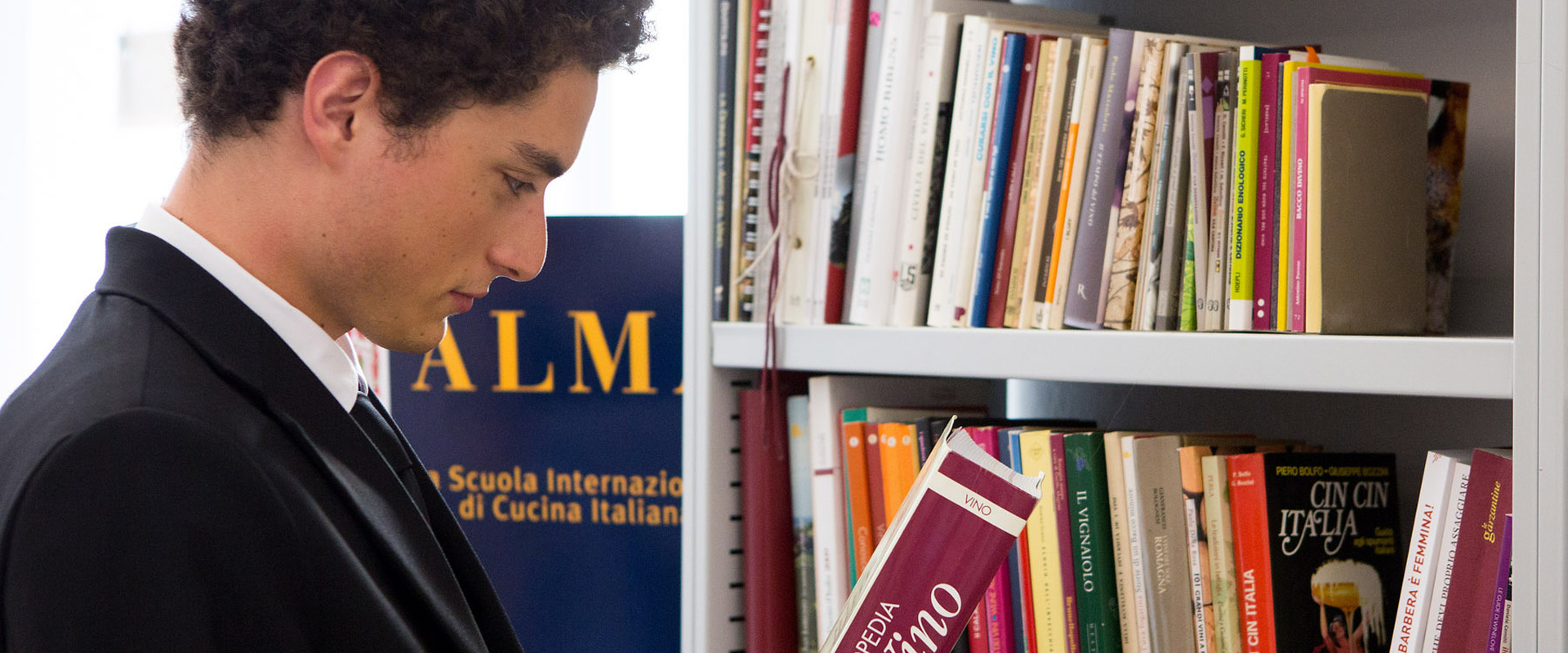Recommended reading from Marino Marini, librarian at Alma
2018-02-12
The splendid
Reggia di Colorno, a few kilometres outside
Parma,
UNESCO Creative City of Gastronomy and heart of Italy’s
Food Valley, conceals a treasure:
ALMA, the International School of Italian Cooking , the world’s first and most authoritative professional training centre for Italian hospitality and food.
And ALMA, in turn, contains another treasure: a
library. With more than 13,000 volumes and 1500 multi-media materials including dvds, films, cd-roms and digital pdfs, it is
Italy’s biggest library specialising in food and wine, and one of the biggest in Europe.
We asked the librarian for his list of recommended reading. And he’s no ordinary librarian:
Marino Marini was one of the founders of the
Slow Food movement in the late 1980s, an international non-profit association which aims to restore the focus on local foods and food traditions, with respect for people who produce food in harmony with the environment and ecosystems.
Marini comes from Brescia and already had a long career as a cook behind him before becoming a
food historian. In 2004 Marini donated his collection of about 5000 books to the newly established ALMA school. In 2009 he was awarded the Bancarella Prize in the Cooking category for his book entitled
La Gola. He was shortlisted for the prize again in 2016, this time with the book
La Cucina Piacentina. Storia e ricette, written with ALMA director Andrea Sinigaglia.
What is the most important book about Italian cooking, the one no fan of Italian food should do without?
“La cucina italiana
by Massimo Montanari and Alberto Capatti, an essential volume for understanding the history of Italian food. There are plenty of books on the subject, but most of them are recipe books, while this volume offers an intelligent vision: the maxim “we are what we eat” is interpreted in the philosophical sense, because it means not only food, but places too.”
And the most important book about pasta?
“La Pasta
by Françoise Sabban and Silvano Serventi, who put together a beautiful story about pasta and all the different types, in the west but also in the east.”
And is there a bible of pizza, a great symbol of Italian gastronomic culture?
“Pizza, una grande tradizione italiana
, edited by Antonio Puzzi, which explains the details of the various ingredients and the steps involved in making pizza, then the main types of pizza and the best pizzerias in Italy, region by region.”
What is the most important book about the vegetarian philosophy of cooking?
“
A book that came out in the 1930s and is still in print: Cucina vegetariana e naturismo crudo
by a Sicilian nobleman, Enrico Alliata, Duke of Salaparuta. Rudolf Steiner’s books laying the foundations of macrobiotic cooking and the cultural meaning of being vegetarian or vegan are also important.”
Books about food for singles, parents of small children, aspiring chefs and pastry chefs, wine-lovers and sustainable cooks
We ask
Marino Marini for more recommendations for reading about food.
One of the founders of the
Slow Food movement and an expert on the history of food, Marini is the librarian at
ALMA, the International Italian Cooking School in Colorno, Parma.
Is there an essential cookbook for singles?
“Il single in cucina
by Massimo Diodati, all about the pleasures of dining alone and in company. Because it’s sad to cook for just one person! Even singles should invite people to lunch or dinner, because cooking for others demonstrates our care, attention and affection for them.”
What is the best cookbook for parents of small children?
“
There’s a book published by Slow Food about eating with children and teaching them to enjoy food. It’s called: Il gusto di mangiare insieme. Dal cibo alla tavola: un’educazione alimentare in dieci tappe
. It’s a good idea to teach children what it means to eat in company and to eat with grown-ups: food is a valuable tool for bringing people together. And sharing food has always played a key role in human society, since prehistoric times....”
What is the best book about making desserts ever published?
“Tradizione in evoluzione
by Leonardo Di Carlo. The author taught at ALMA for many years and is one of the world’s greatest pastry chefs. He went back to a historic Italian pastry-making manual and completely updated it, illustrating the various preparations and, above all, explaining the mistakes readers might make and offering them solutions.”
What is the best book for learning to cook?
“
Claudio Sadler, who has two Michelin stars and many years of experience teaching in cooking schools, wrote the Manuale dello chef
, a great book about techniques, tools, recipes and advice for people wanting to learn to cook, even if they don’t want to become professional chefs. And there’s another volume too: a recipe book that came out in the mid-seventies that is still available: Le ricette regionali italiane
by Anna Gosetti della Salda, who collected recipes submitted by readers of the magazine “La cucina italiana”, compared them and selected the best ones. They are simple recipes, explained very well, in a pleasant way”.
What about a book for learning about wine?
“
A manual by Paola Gho and Giovanni Ruffa called Il piacere del vino
: an all-round approach to wine, from the vineyard to the glass. After reading it, readers will definitely enjoy their wine more, in a more conscious way .”
Is there an essential volume about sustainable cooking?
“Buono, pulito e giusto
by Carlo Petrini. It’s a book about food that is good in terms of flavour, clean because it contains no pollutants and is ecological, and fair because the producers are paid fairly.”
Mariagrazia Villa
Photos: Foto Carra
